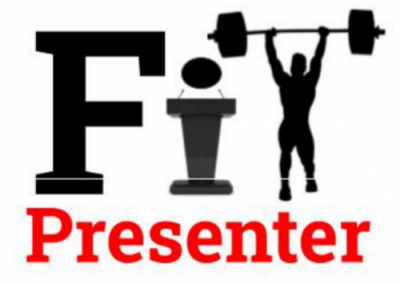In life, one must choose between being fluid and steadfast; between unwavering principle and responsive adaptation; between maintaining what is and striving for what should be. Such a paradox drives humanity to its inherent curiosity to transcend rather than to abandon for that which one does not already possess.
Does that make sense?

Actually, no it doesn’t
But if I asked that question in conversation, you would most likely say yes anyway. Another version of the same question is, “Do you understand that?” Doesn’t it come naturally to say yes?
Hopefully you said yes.
Imagine you take the stage, and you want to check audience comprehension. You want to know if what you’re saying makes sense to them. What do you do? The answer lies in teaching methodology.

Concept check questions
To check comprehension from students or from an audience, language teachers use a Concept Check Question (CCQ). Just as easily as you can ask the dreaded question that doesn’t make sense, you can ask a better question that prompts an intelligent answer. We have four levels of CCQ, depending on the depth of the topic and the level of the students.
Yes/no questions
The simplest question is closed-ended, and requires a yes or no answer. This is best for basic students. For example, if they want to know what a notebook is, first you show them a notebook, then simply ask, “Do you have a notebook?”

This is not exactly a pedagogical deep dive, but it serves a purpose quickly. The same rule applies as a speaker or in everyday conversation. Whenever your instinct tells you to ask if they understand, you can replace that question with a yes or no. Instead of “We have to start off with a mission statement. Does that make sense?” you can say “We have to start off with a mission statement. Have you ever written a mission statement before?” Either a positive or negative response will let you know they understand the task.
The 50-50
Concept check question number two is the 50-50 question. Give them two choices. With second language vocabulary and grammar, the 50-50 is the most common. They might ask, “What does ‘saw’ mean?” (or more likely “what means ‘saw’?" The struggle is real) The teacher mimes the activity, and then asks, “Is that past or present?”
Once again, the student’s answer will indicate comprehension. Think about a point in your talk when your audience might be confused. It could be over terminology, instructions, or ideas. Whenever you see a look of doubt on their faces, drop in a 50-50. Even if only one person answers, the rest of the audience will feel freer to ask another clarifying question.

If you play basketball, here’s a question for you. I honestly don’t know the answer. What is the difference between a small forward and a power forward? Feel free to answer in the comments section. Once you explain the difference, follow up with a 50-50 CCQ. Give a situation, and then ask, “Is that a small forward or power forward?” Then you can follow up with “Why?” Game (G) Set (C) Match (Q). Yes, I know, that was a tennis reference to a basketball question, but it makes sense.
Open-ended questions
To check a deeper understanding, you can employ the third level of CCQ, the open-ended question. If you’re discussing social media, you can ask, “What is your favorite platform?” and then follow it up with “Why do you like it?”
In a language class, let’s say the new vocabulary is pizza (not likely; everybody knows pizza). You can ask, “What is your favorite pizzeria?”
The deepest question is always “Why?” Prep the audience with easier questions before asking why or you may get crickets when they try to answer.

Tell me what you know ...
The final CCQ, the ultimate CCQ, is not a question at all. Have the student or audience member expound upon the subject. In a language class, the CCQ is “Put it in a sentence.” In a fitness setting, you can say, “Tell me what you know about muscular hypertrophy.” That gives the student a chance to show off and describe the protein synthesis, and the addition of actin and myosin myofilaments to physically grow the muscle. But I wasn’t showing off when I typed that description.
There is an ugly version of this question, popular among micro-middle-managers in cubicles all across the corporate world. “Repeat back to me everything I just said.” If you are in management and using that phrase, I hope you get fired. Promise me, “I won’t do that.” Cue the song lyrics.

There is no "that"
I’ll never stop dreaming of you every night of my life, no way.
I’ll never do it better than I do it with you so long, so long.
Do you know those lyrics? Thirty years have passed, and most people still don’t know what “That” is in Meatloaf’s instant classic “I’d do anything for love (But I won’t do that).” Now you have your answer. The lyrics above are the things he won't do. That’s that.
What about your “that?” What is that? Concept check questions only work if the speaker has a that. Sometimes there is no that. Sometimes the speaker’s train of thought runs off the tracks and the words stop making sense. Dangling modifiers are bad enough. Dangling pronouns that don’t modify anything are even worse.
The dreaded question often comes when the speaker needs a lifeline from the audience. If you are in the audience, do not rescue the speaker! Let the speaker know that you expect clear communication. Just be ready for the speaker's response: "What don't you understand?" Your response? "That. I don't understand that."

The one exception
There is one exception to this rule. If the answer is no, then you can ask the question. People want more laws, but less law enforcement.
Does that make sense? No!
We’re supposed to promote critical thinking in class, yet we’re expected to use standardized PowerPoint slides. Does that make sense? No way!
After that, you are free to follow up with a CCQ. An open-ended question would be “Why not?” or “How does PowerPoint affect critical thinking?” The big daddy CCQ would be “Tell me how to achieve critical thinking in class.”
Does this make sense to you?
If you see the light, then light up the comment section with some potential CCQs that you might ask on stage. If you like the dreaded question and want to stand your ground while calling me a bunch of names, I only ask that your angry comments make sense. And that's that.















